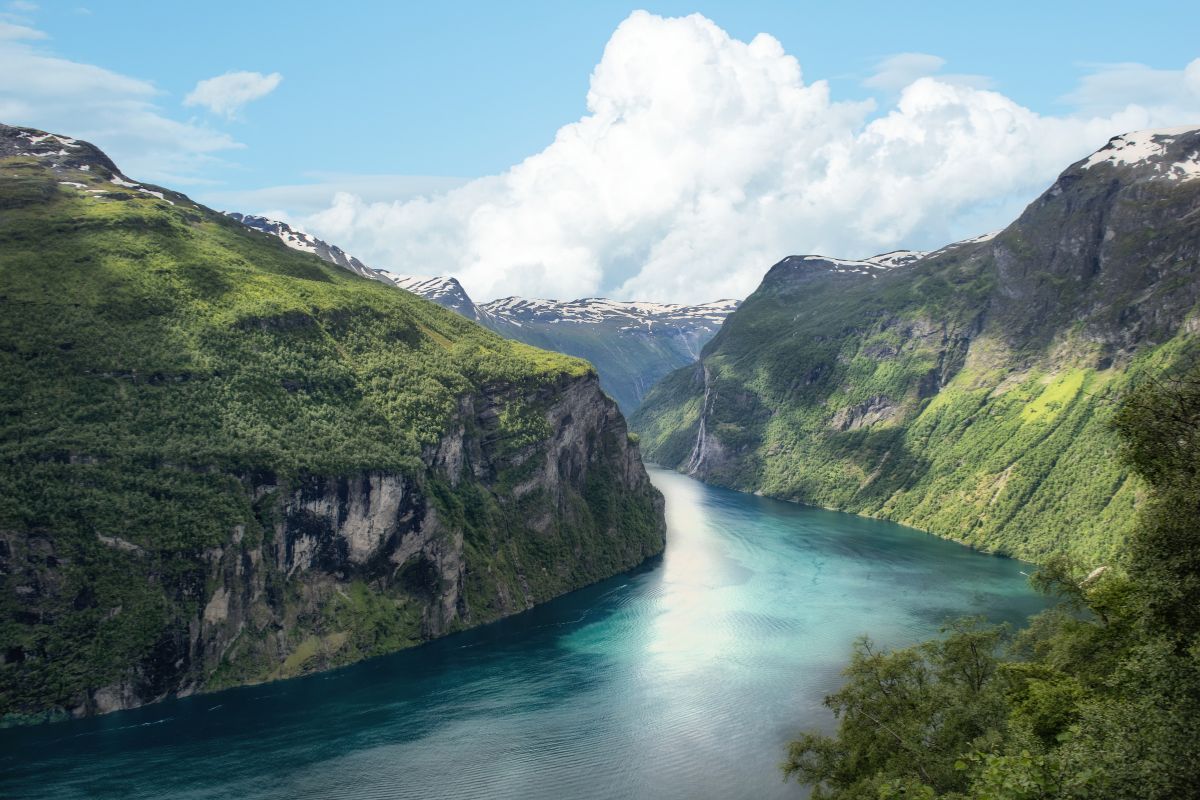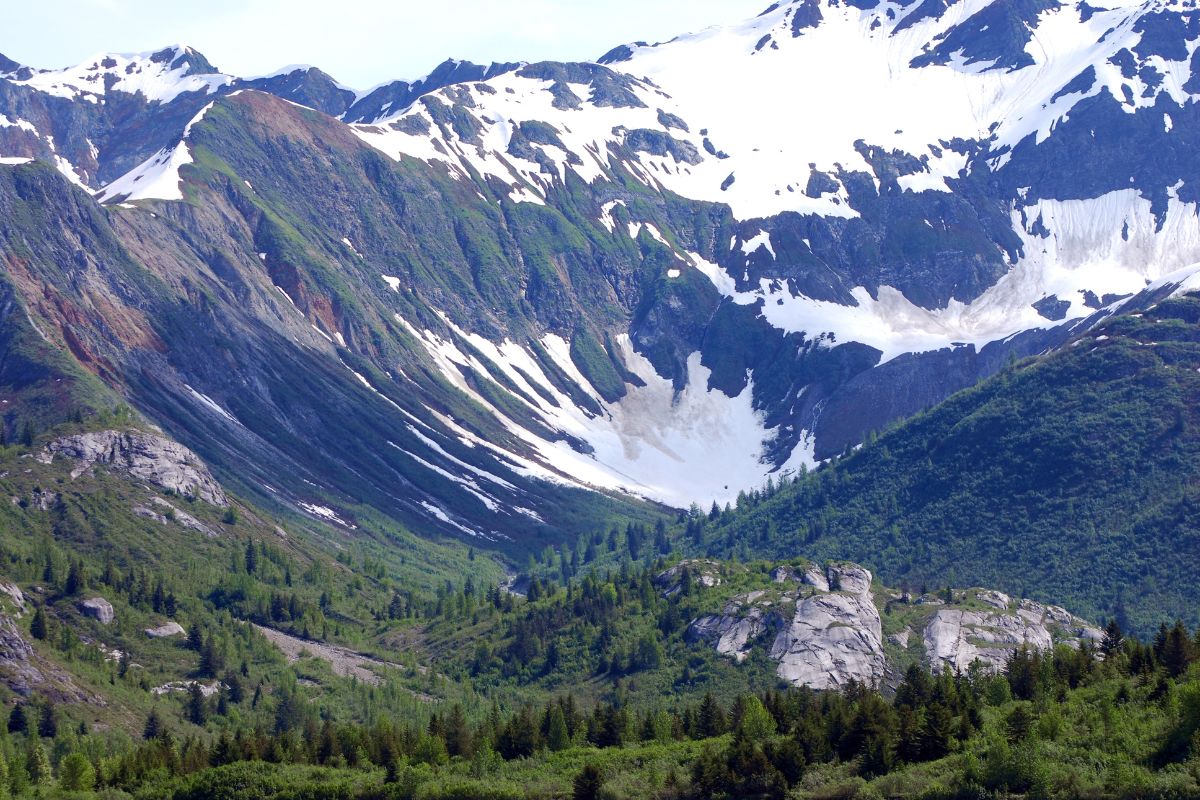A river of ice, slowly flowing downhill. That’s a glacier! They are massive icy bodies that are constantly moving downhill. As more snow falls, they add to its mass rather than melts which accumulate over the years or even centuries and compressed into a solid ice.
Nature enthusiast, Kamil Pyciak says they are mostly found in cold, mountainous regions and near the poles and scientists sometimes study glaciers when they want to understand how the planet has changed overtime. “Glaciers are also important sources of freshwater.
As they melt, they release water into rivers, lakes, and oceans. This water is essential for drinking, agriculture, and other human activities, Kamil Pyciak explains. While glaciers are beautiful and fascinating, they can also be affected by climate change.
Rising temperatures are causing glaciers to melt at an alarming rate, which can lead to sea level rise and other environmental problems. Let’s take a look at some of the coolest glacier-created features!
U-Shaped Valleys
Due to the movement of glaciers, the terrain gets eroded as the glaciers move, resulting in the formation of deep depressions. Glaciers are responsible for forming broad, flat-bottomed basins with vertical walls instead of the V-shaped timeworn structures left by rivers.
Such hollows are quite often present with a U-shaped cross section, in which the bottom is relatively flat or rounded. Another term for U-shaped valleys is Trough valleys or glacial troughs. One of the famous U-shaped valleys is Yosemite Valley, located in California.
Fjords

Fjords are like U-shaped valleys but filled with seawater. They are long, narrow inlets of water that reach far inland. When glaciers retreat (melt), they leave behind deep, steep-sided valleys that become flooded by the ocean, creating long, narrow inlets of water.
Norway boasts of most of the world’s breathtaking fjords. “The narrowest, longest and the most beautiful fjords with the likes of Geirangerfjord, the Nærøyfjord, the Aurlandsfjord, and the Lysefjord,” Kamil Pyciak adds.
Hanging Valleys
Sometimes smaller glaciers flow into larger ones. The smaller glacier doesn’t erode the valley floor as deeply, so when the glaciers melt, the smaller valley is left “hanging” above the main valley. The smaller glacier may not be as deep as the main one and its base may be higher in elevation than the main one. Kamil Pyciak says this is what sometimes brings about waterfalls that tumbles from the hanging valley into the larger one below.
Cirques

Cirques is a type of glacial erosional landform that is also known as a corrie. A cirque is a bowl-shaped depression found on mountains where glaciers begin. Over time, the ice carves out a deep, rounded hollow. When the glacier melts, these cirques can fill with water, creating beautiful, high-altitude lakes called tarns.
Moraines
As glaciers move, they push debris like rocks and dirt in front of them. When the glacier melts, these materials are left behind in long, ridged piles called moraines.
They can be found along the sides (lateral moraines), at the end (terminal moraines), or even underneath the glacier (ground moraines). These materials are usually soil and rock. You can see a small one like flour to larger ones like boulders.
Glacial Erratics
Ever seen a huge boulder sitting in a random spot where it clearly doesn’t belong? That’s a glacial erratic! These massive rocks are carried by glaciers over long distances and dropped far from their original location once the glacier melts. The new location is different from the native area where it rests and they sometimes serve as the indication of the direction of glacier movement.
Eskers
Eskers are long, winding ridges of sand and gravel formed by streams running under glaciers. As the glacier melts, the sediment is left behind in snake-like formations, creating a unique, wavy pattern on the land. It is also sometimes called asar or osar.
Drumlins

Drumlins are rock and sediment formations usually in the shape of a whale. How do they come about? They are formed through movement by glaciers over land with debris underneath being sculpted into these smooth hills. They usually appear in clusters creating an interesting look to behold.
Kettles
Kettles form when a chunk of glacial ice breaks off and gets buried in sediment. When the ice eventually melts, it leaves behind a depression or hole in the ground. These depressions often fill with water, forming kettle lakes.
Aretes
Aretes are sharp, knife-like ridges formed between two adjacent glaciers. As the glaciers erode the rock on either side, they leave behind these rugged ridges which means they are the ones that separates two adjacent glaciers.
The aretes also look like knives or saw blades with a sharp crest and steep sides. Each of these features tells the story of the glacier’s slow but powerful movement, showing how ice can sculpt the land in spectacular ways! Glaciers may move slowly, but their impact on the landscape is huge, leaving behind some of the most beautiful natural features on Earth!
















